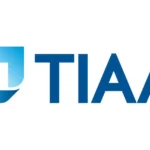Introduction
“Starting your own esthetician business can be profitable and rewarding, but it requires careful planning, investment, and ongoing effort. Success depends on factors like location, marketing, and maintaining high-quality services.”
Starting your own esthetician business can be an exciting and rewarding venture. As an esthetician, you have the opportunity to provide valuable services that help clients look and feel their best.
However, one of the most critical aspects of running your own business is understanding how much you can earn.
In this comprehensive guide, we will explore the various factors that influence esthetician earnings, initial investments, pricing strategies, revenue streams, marketing techniques, and more.
By the end of this article, you will have a clear understanding of what it takes to maximize your earnings potential as an esthetician.
Introduction to Esthetician Earnings

Becoming an esthetician and starting your own business can be a rewarding and lucrative career choice. As an esthetician, you have the opportunity to offer a range of services, from facials and skincare treatments to waxing and makeup applications.
The earning potential in this field varies widely based on several factors, including location, experience, and business acumen. This article will delve into the various aspects that influence how much estheticians can make with their own business, providing insights and practical tips for maximizing your income.
Factors Influencing Earnings
Several key factors play a crucial role in determining the earnings of estheticians who own their businesses:
- Location: Urban areas with higher living costs often allow for higher service prices, whereas rural areas might have lower pricing structures.
- Experience and Expertise: More experienced estheticians can charge premium prices for their services, especially if they have a loyal clientele.
- Specialization: Offering niche services that require specialized skills can justify higher fees.
- Marketing and Client Acquisition: Effective marketing strategies can attract more clients and increase revenue.
- Business Management Skills: Efficient management of operations, costs, and pricing can significantly impact profitability.
Initial Investment and Startup Costs
Starting an esthetician business involves several initial costs. These can include:
- Licensing and Certification: Obtaining the necessary licenses and certifications to operate legally.
- Equipment and Supplies: Investing in quality skincare products, treatment beds, and other essential tools.
- Rent and Utilities: Costs associated with leasing a commercial space, unless you operate a home-based business.
- Marketing and Branding: Initial expenses for creating a brand identity and marketing materials.
- Insurance: Liability insurance to protect your business from potential legal issues.
Setting Competitive Pricing
Determining the right pricing for your services is critical. You need to strike a balance between competitive rates and profitability. Consider:
- Market Research: Analyze what other estheticians in your area are charging.
- Cost Analysis: Ensure your prices cover your costs and desired profit margins.
- Value Proposition: Highlight the unique value and quality of your services to justify your pricing.
Revenue Streams for Estheticians
Estheticians can diversify their income through various revenue streams, such as:
- Service Fees: The primary source of income from providing treatments.
- Product Sales: Selling skincare products to clients.
- Membership Programs: Offering membership packages for regular clients.
- Workshops and Classes: Hosting skincare workshops or training sessions.
- Affiliate Marketing: Partnering with brands to earn commissions on product sales.
Marketing and Client Acquisition
Effective marketing is essential for attracting and retaining clients. Strategies include:
- Online Presence: Creating a professional website and maintaining active social media profiles.
- Search Engine Optimization (SEO): Ensuring your website ranks well in search engine results.
- Referral Programs: Encouraging satisfied clients to refer friends and family.
- Promotions and Discounts: Offering special deals to attract new clients.
- Community Engagement: Participating in local events and networking to build your reputation.
Managing Business Expenses

Keeping expenses under control is crucial for profitability. Consider:
- Budgeting: Creating a detailed budget to track income and expenses.
- Cost-Saving Measures: Finding ways to reduce costs without compromising quality.
- Financial Planning: Regularly reviewing financial statements and adjusting strategies as needed.
Case Studies of Successful Estheticians
Examining the journeys of successful estheticians can provide valuable insights. These case studies often highlight:
- Business Strategies: Effective tactics used to grow their businesses.
- Challenges Overcome: Obstacles they faced and how they overcame them.
- Lessons Learned: Key takeaways that can be applied to your own business.
Challenges and Risks
Owning an esthetician business comes with its share of challenges and risks:
- Economic Downturns: Reduced discretionary spending can impact client numbers.
- Competition: High competition in the beauty industry requires constant innovation.
- Regulatory Changes: Keeping up with changes in industry regulations and standards.
- Client Retention: Maintaining a loyal client base in a competitive market.
- Work-Life Balance: Managing the demands of running a business while maintaining personal life balance.
Continuing Education and Skill Development
Continuing education is vital for staying current and competitive. Consider:
- Advanced Courses: Taking advanced courses to learn new techniques.
- Certifications: Obtaining additional certifications to enhance your credentials.
- Industry Trends: Staying informed about the latest trends and innovations in skincare.
- Networking: Joining professional organizations and attending industry conferences.
What Is A Business Registration Number
Balancing Work and Personal Life
Achieving a healthy work-life balance is essential for long-term success and well-being:
- Time Management: Effective time management strategies to avoid burnout.
- Delegation: Hiring staff or outsourcing tasks to reduce your workload.
- Self-Care: Prioritizing self-care to maintain physical and mental health.
- Work Boundaries: Setting clear boundaries between work and personal life.
Conclusion: Maximizing Earnings Potential
Maximizing earnings potential as an esthetician with your own business involves a combination of strategic planning, effective marketing, continuous education, and excellent client service.
By understanding the factors that influence earnings and implementing best practices, you can build a successful and profitable esthetician business.
Importance of Estheticians Making with Their Own Business

Owning your esthetician business offers several advantages:
- Independence: The freedom to make your own decisions and set your schedule.
- Financial Rewards: The potential for higher earnings compared to working for someone else.
- Professional Growth: Opportunities for continuous learning and development.
- Client Relationships: Building long-term relationships with clients.
- Personal Satisfaction: The fulfillment of owning and growing your business.
Additional Tips
- Client Feedback: Regularly seek and act on client feedback to improve your services.
- Innovative Services: Continuously introduce new and innovative services.
- Networking: Build a strong network within the industry for referrals and collaborations.
- Technology: Utilize technology for scheduling, marketing, and client management.
Pros and Cons
| Pros | Cons |
| Independence: Be your own boss and make your own decisions. | Financial Risk: Initial investment and ongoing expenses can be high. |
| Earnings Potential: Potential for higher earnings compared to working for someone else. | Workload: Managing all aspects of the business can be time-consuming. |
| Flexibility: Set your own schedule and work hours. | Client Acquisition: Building a client base can take time and effort. |
| Creativity: Opportunity to offer unique services and create a personalized client experience. | Regulations: Ensuring compliance with local regulations and maintaining proper licenses. |
FAQ
1. How much can estheticians make in their first year of business?
Answer: In the first year, earnings can vary widely based on factors like location, marketing efforts, and client acquisition. On average, estheticians may earn between $20,000 and $50,000.
2. What are the most profitable services for estheticians to offer?
Answer: Services like advanced skincare treatments, microdermabrasion, chemical peels, and personalized facials tend to be highly profitable due to their higher price points and repeat clientele.
3. How can estheticians attract and retain clients?
Answer: Effective marketing strategies, excellent customer service, loyalty programs, and regular follow-ups can help attract and retain clients. Providing consistent, high-quality services ensures clients return.
4. Is it necessary for estheticians to continue their education?
Answer: Yes, continuing education is crucial for staying current with industry trends, learning new techniques, and maintaining certifications. It also helps estheticians offer the latest and most effective treatments.
5. What are the typical startup costs for an esthetician business?
Answer: Startup costs can range from $10,000 to $50,000, depending on the scale of the business. This includes licensing, equipment, rent, supplies, marketing, and insurance.
Setting Competitive Pricing: A Suitable Table
| Service Type | Average Price Range | Factors Influencing Price |
| Basic Facials | $50 – $100 | Location, Experience, Product Quality |
| Advanced Skincare | $100 – $200 | Specialization, Equipment Used, Client Demand |
| Waxing Services | $30 – $80 | Area of the Body, Duration of Service |
| Microdermabrasion | $75 – $150 | Equipment Quality, Session Length |
| Chemical Peels | $100 – $250 | Type of Peel, Experience, Product Quality |
Conclusion
Starting and running your own esthetician business can be both challenging and rewarding. By understanding the factors that influence earnings and implementing effective strategies, you can maximize your income and build a successful business.
Continuous education, efficient business management, and excellent client service are key to achieving long-term success in the esthetics industry.
Whether you’re just starting or looking to grow your existing business, the tips and insights provided in this article will help you navigate the path to financial and professional success as an esthetician.

Hi! I’m Semuel Adams. I’m a business expert and author at SkyVoxes. With a Master’s degree in Business, I’m passionate about sharing practical advice and strategies to help businesses thrive. My goal is to make complex business concepts easy to understand and apply. If you have any tips or information about business you can share with me, I w’ll add this important information in my content.










